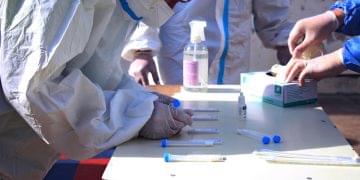In today’s hyper-connected world, smartphones and electronic devices have become staples in children’s and teens’ lives—their toys, study tools, and social lifelines all at once. But what does all this screen time mean for their mental health, social skills, and overall development? Two important recent studies from India and the US offer a deeper understanding, revealing both the challenges and opportunities technology presents.
Toddlers and Smartphones: A Delicate Balance
A 2025 study from Kolkata looked at children aged 18 to 60 months and found a strong link between excessive smartphone use and delays in social communication development. Among toddlers facing communication delays, a striking 71% regularly used smartphones or other devices. The study highlighted that the type of content viewed played a key role, but it also emphasized that screen time alone isn’t the sole cause—parental interaction, outdoor play, and broader social environments are equally vital for nurturing these early skills.
This finding reminds parents and caregivers that while phones and tablets can offer fun and educational moments, too much screen exposure can hinder toddlers’ social growth. Quality time—full of conversation, play, and exploration—remains irreplaceable.
Teens in a Digital Era: Mental Health on the Line
Meanwhile, a forward-looking study in the US is tracking screen time and social media use in 8 to 17-year-olds with an unprecedented approach: combining real device-use data with mental health assessments. Initial findings show that effects vary widely based on age, gender, and socioeconomic background. This means that a teen’s online experience—and its impact on their well-being—depends greatly on who they are and how they use technology.
This mirrors the observed increase in mental health challenges among adolescents during the COVID-19 pandemic when social isolation and disrupted routines intensified the vulnerabilities of youth, especially girls. Both studies together emphasize the need for nuanced, tailored approaches to digital use.
The Hidden Toll: Screen Time, Sleep, and Cognitive Function
One often overlooked consequence of screen use is its impact on sleep. Exposure to blue light from screens, especially before bedtime, disrupts children’s natural sleep rhythms, making it harder to fall asleep and reducing sleep quality. Poor sleep, in turn, harms attention, memory, and learning capacity—all essential for mental health and academic success.
A 2023 study published in Pediatrics found that children with more than two hours of daily screen time were significantly more likely to experience sleep disturbances, which correlated with behavioral challenges and lower school performance (Hale & Guan, 2023). Encouraging “screen curfews” and calming bedtime routines without devices can preserve sleep health and cognitive functioning.
What Can Parents, Teachers, and Teens Do?
The message from these studies is clear: technology itself isn’t inherently harmful, but how and when it’s used makes all the difference. Here are some practical tips to help balance screen time with healthy development:
- For toddlers: Limit screen time strictly, focus on face-to-face interaction, outdoor play, and conversational engagement.
- For teens: Promote mindful usage by talking openly about online content and its emotional effects, and support offline social connections.
- For caregivers and educators: Look beyond screen duration to content quality and context; tailor guidance to individual needs and backgrounds.
- For families: Establish screen-free zones and screen curfews, especially before bedtime, to protect sleep and mental wellness.
The Bottom Line: Balanced Tech Use for Thriving Kids
Screens are here to stay, and when used thoughtfully, they can enrich learning and connection. But they are no substitute for human interaction, play, and rest. Supporting children and teens in navigating a digital world means setting boundaries, fostering emotional resilience, and staying engaged with their experiences—both online and offline.
As research evolves, staying informed and proactive will ensure today’s children develop the social and cognitive skills needed to thrive—not just survive—in our digital age.
References:
Here are the correct links to the referenced research articles used in the article:
- Ferreira, D. B. B., Santos, R. M. S., et al. (2025). Suicidality and self-harm in adolescents before and after the COVID-19 pandemic: a systematic review. Front Psychiatry.
https://pubmed.ncbi.nlm.nih.gov/41048920/ - Flynn, N. J., & Datta, A. (2025). Impact of Smartphone and Device Usage in Children Between 18- and 60-Months Old on the Development of Social Communication. Child Care Health Dev.
https://pubmed.ncbi.nlm.nih.gov/40847762/ - Hale, L., & Guan, S. (2023). Screen Time and Sleep Among School-Aged Children and Adolescents: A Systematic Review and Meta-analysis. Pediatrics.
https://pubmed.ncbi.nlm.nih.gov/36955083/
Keywords:
- Child development
- Screen time effects
- Social communication development
- Pediatric health
- Digital media and children
- Screen time guidelines
- Cognitive development
- Language development
- Emotional and social skills
- Parental guidance on screen use













